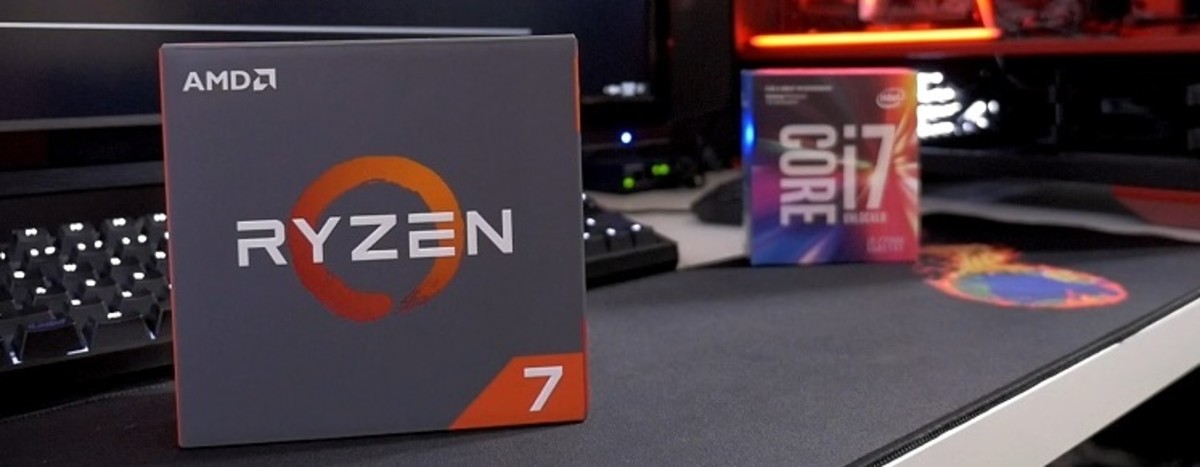Evolution of Modern Microprocessors
The case of Intel and AMD
Over the years, there has been a tremendous increase on the reliability on computers. Moreover, the need for higher performance computers by the users over the years has forced Intel and AMD, the leading manufacturers of computers to seek ways of meeting their clients’ needs by the making of microprocessors with have higher performance capabilities. In addition, many users are avoiding slow running machines and this has brought great competition between the two companies in terms of the kind of processors they produce. The reliability of processors can be measured on how fast they perform their tasks, their memory, and the amount of power consumption. With this in mind, Intel wanted to come up with processors that could consume less power, and do the assigned tasks in the shortest time possible. The processor is thus, the most important component in determining how fast a system will operate.
Pentium is the brand name for the Intel Company. The company decided to use the name since it was not possible to market the first processor that bore just a number ‘i586’ as the brand name. The first Pentium CPU had a speed lying between 60 MHZ and 66 MHZ of computer memory. These microprocessors had 3.1 million transistors. However, their power consumption was high and they were slow in their processing speed which prompted a new release of Pentium referred to as the Pentium pro.
The Pentium pro was the second generation microprocessor based on the P6 architecture which only lasted for three generations up to the Pentium 3. They improved in their power consumption as they had 5.5million transistors and this prevented much overheating unlike the first generation microprocessors. The second generation microprocessor increased their processing speed to between 150MHZ and 200MHZ.
The next generation of microprocessors was generally referred to as Pentium 2. Their processing speed increased considerably to 266MHZ. As the need to avoid much overheating by the processor, these processors had 7.5million transistors. However, there was need for faster processing and thus Intel gave rise to a new generation called Pentium 3. This was the time “Gigahertz” was introduced and these microprocessors had a speed of 1GHZ. But due to much competition mainly from AMD, Intel increased this speed to 1.13GHZ of the processing chip. Consequently, this action of the “Gigahertz” race was criticized by AMD as unreliable and unstable and as a result the Pentium 4 was introduced. This new Pentium had a processing speed of 1.4GHZ and 1.5GHZ with 42million transistors.
Today’s Pentium D processor carries 376 million transistors with a processing speed of 3.6GHZ while that of the single core Pentium has a processing speed of 3.8GHZ. In addition, the rise of new microprocessor has led to the increase of clock speed, high power consumption and greater heat dissipation. Moreover, new desktop processors to be released will mainly concentrate on chip design as this will balance power consumption which has been a major problem with microprocessors.
AMD on the other hand, has been one of the great competitors to Intel. In recent times, they have equally advanced in their technology in order to gain a wider market scope. This has been through the release of Athlon, Thunderbird, and Duron. Unlike the processors in Intel mainly Pentium 3 that were based on NetBurst architecture, Athlon processor from AMD is based on the K7 architecture. The K7 is a form of architecture that consists of processors with high performance speeds. However, the latest release of Intel’s Pentium 4 is not based on any architecture since the NetBurst architecture was for Pentium 3. As a result, this release from AMD has been successful unlike Intel’s old architecture that limits its top processor at the moment.
A number of processor chips are in the market today. They range from low cost processors to high cost. Sempron that was manufactured by AMD is a budget friendly chip used in notebooks and desktops and is more efficient than Intel’s Atom.
Characteristics of AMD’s Sempron
Companies that need high performance and reliability of their machines should have no choice here than to use this microprocessor chip. In addition, it boots and loads applications so easily. It is known that microprocessor that makes use of the micro-architecture features is more reliable and their output is high. Since this chip makes use of this form of architecture it is efficient and can be relied on in the work places.
This chip is supported by RAM, and this makes it possible to handle large amount of tasks and thus improving performance of a system.
The advancement in the microprocessor has mainly been due to the market competition. This has made the competing companies mainly Intel and AMD to devise ways to improve efficiency of machines in order to attract more customers. Despite the recent improvements from both companies, more advancement should be expected. For example since AMD released K7 architecture where its recent microprocessor chips are based, Intel is still relying on Net Burst architecture that was developed for the Pentium 3 processors and this makes us believe that it would soon come up with its architecture for Pentium 4. Both of these architectures are aimed at improving the performance of the microprocessors.
.








